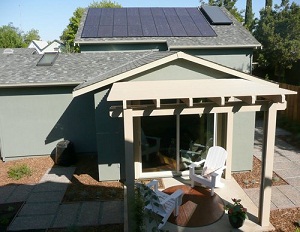California’s Lancaster is first municipality in US to require solar on new homes
 Earlier this week Lancaster, Calif., became the first municipality in the U.S. to require solar on all new buildings. Under the city’s newly adopted residential zoning ordinance, all newly constructed homes in the city must have a photovoltaic array with an average minimum of 1 kilowatt. The zoning rules should provide for a better local market for local solar installers in the region.
Earlier this week Lancaster, Calif., became the first municipality in the U.S. to require solar on all new buildings. Under the city’s newly adopted residential zoning ordinance, all newly constructed homes in the city must have a photovoltaic array with an average minimum of 1 kilowatt. The zoning rules should provide for a better local market for local solar installers in the region.
The zoning ordinance change was unanimously adopted by Lancaster’s city council on March 26. “The specific section addressing solar energy systems requires new single family residential units to provide solar-generated power at a minimum average of 1 kW per unit (depending on the type of lot),” the city said. However, “Installation of solar energy systems is not required for all homes within a production subdivision; however, the builder will still be required to meet the aggregate energy generation requirement within the subdivision.” So under the ordinance some homes in a division may not need solar if other systems are larger.
“Lancaster is already strongly committed to furthering green energy and reducing our carbon footprint,” said Mayor R. Rex Parris (R) ahead of the vote. “In fact, we’ve been nationally and internationally recognized for our solar achievements. However, to truly establish ourselves as the alternative energy capital of the world, we must continue to take a progressive approach. I would like to commend our Planning Commission for this innovative revision of the Residential Zones, which will rapidly advance us towards becoming a net-zero City in record time.”
The new zoning rules also include a push for other clean energy like wind, a part of city ordinance 989. “The purpose of the solar, wind, and alternative energy uses section of the Lancaster Municipal Code is to encourage investment in alternative energy uses in the city, while providing regulations and guidelines for the installation of these uses,” the ordinance stated. “The regulations and guidelines shall ensure that solar, wind, and alternative energy uses, whether as primary or accessory uses, are functionally effective and efficient, aesthetically pleasing in design, and complements the structures they are attached to, and the surrounding environment that they are located in.”
More specifically, “the purpose of the solar energy system standards is to encourage investment in solar energy on all parcels in the city,” it said. The new ordinance will take effect in January 2014.




